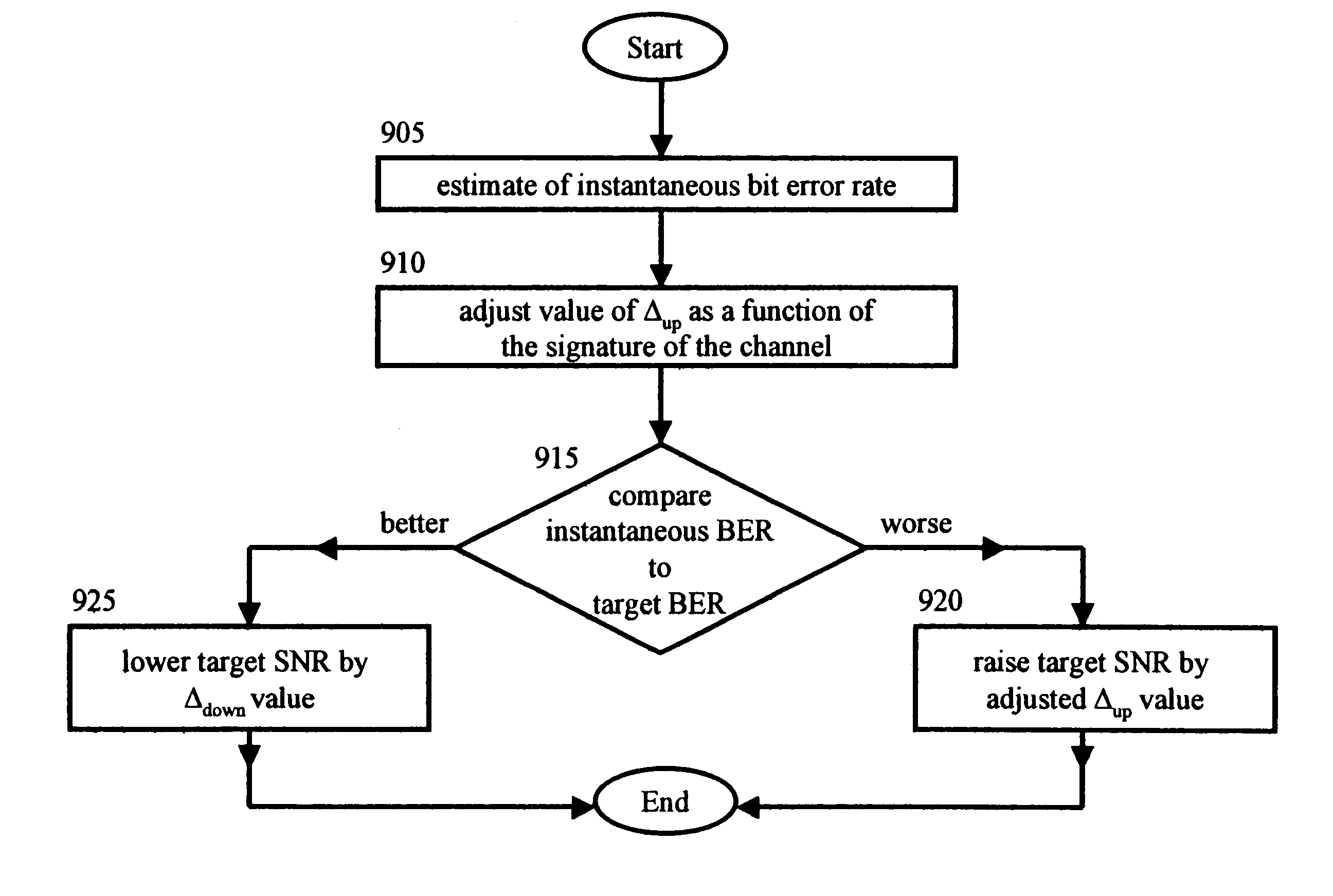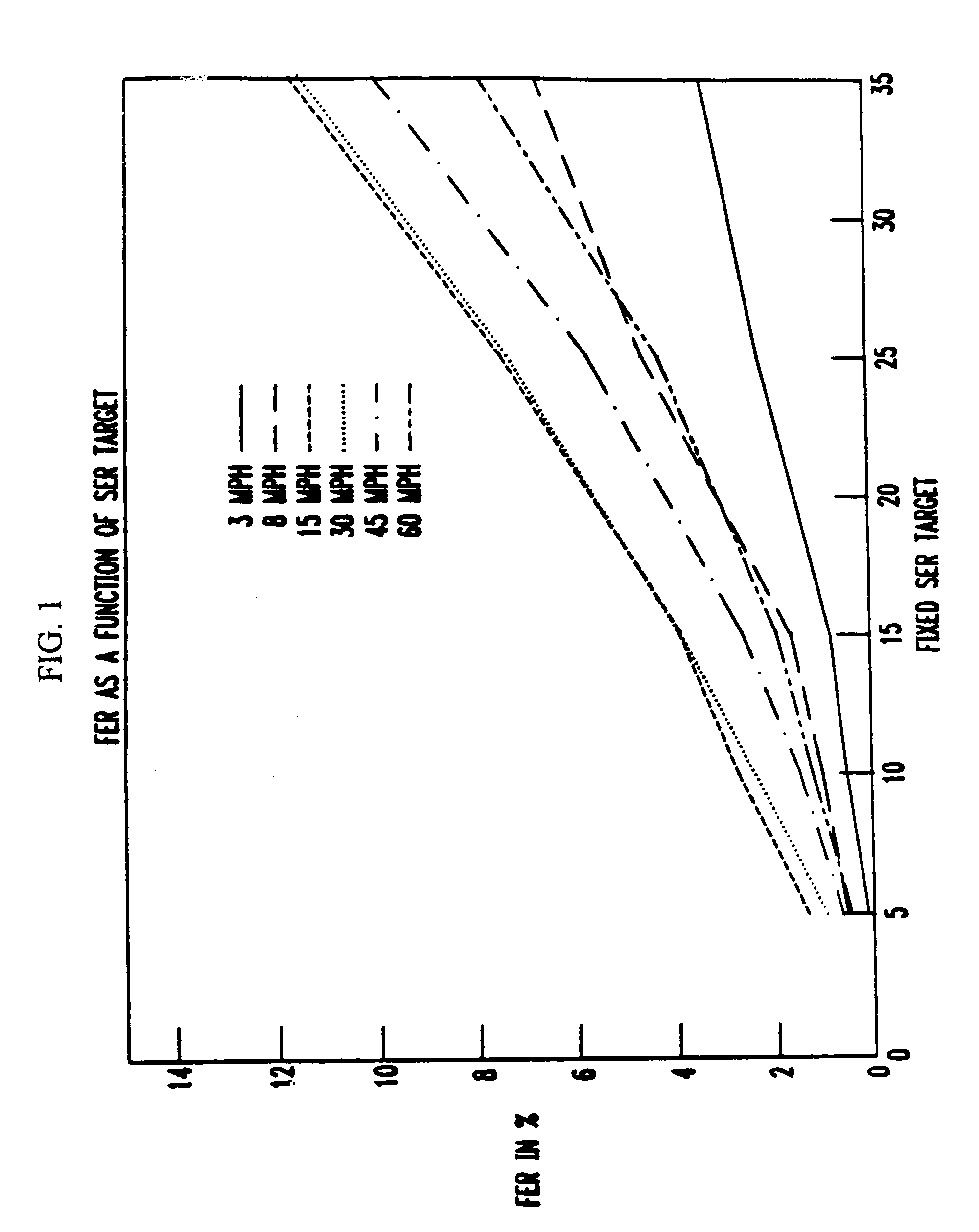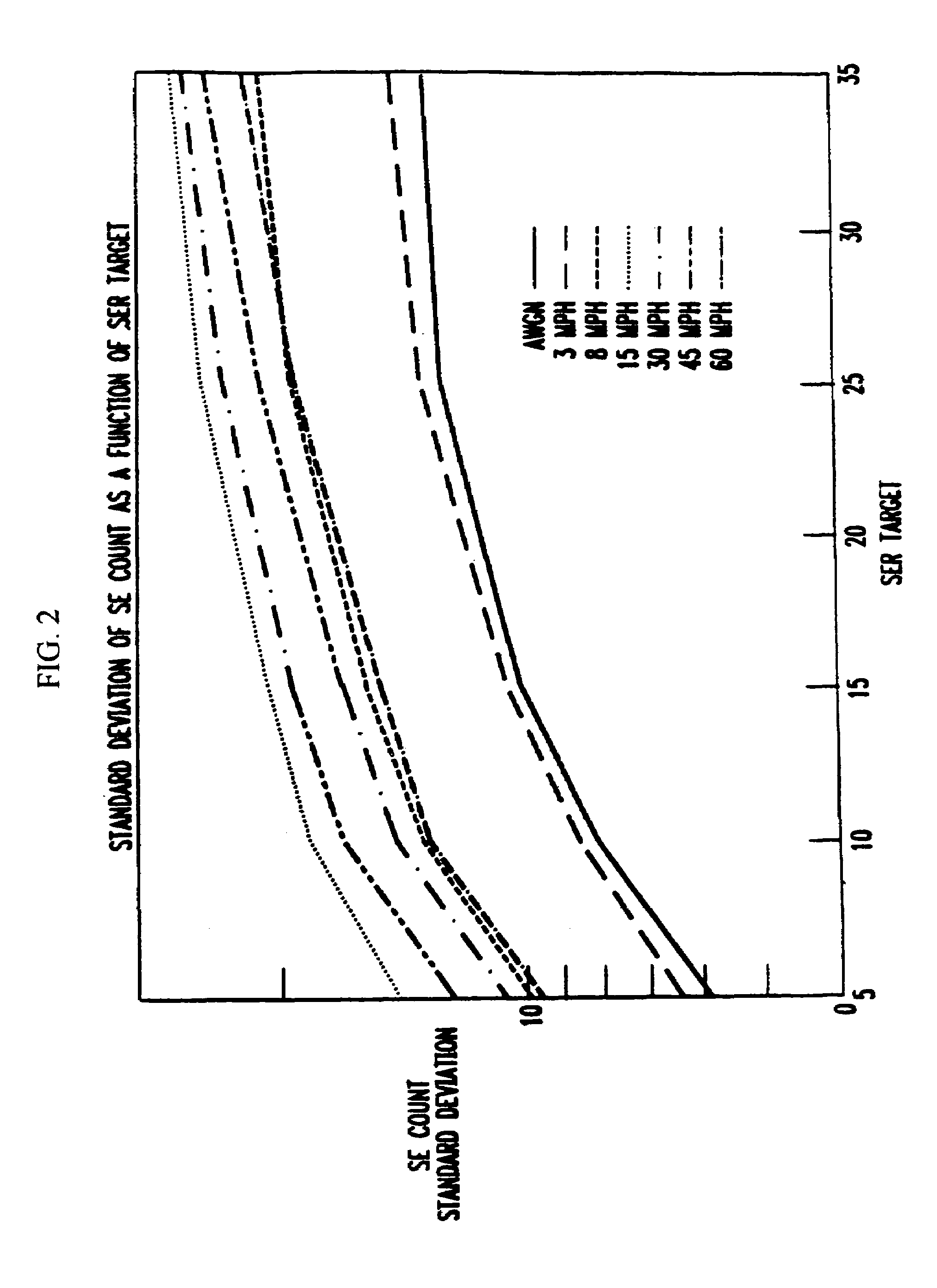Reverse link outer loop power control with adaptive compensation
a technology of adaptive compensation and power control, applied in power management, electrical equipment, radio transmission, etc., can solve the problem that the scheme often fails to achieve its objectiv
- Summary
- Abstract
- Description
- Claims
- Application Information
AI Technical Summary
Benefits of technology
Problems solved by technology
Method used
Image
Examples
Embodiment Construction
[0020]Before describing the inventive concept, a short description of a fixed symbol error rate (SER) target ROLPC technique is provided. Following this section, the performance results of a simulation of the Fixed SER target ROLPC technique is shown upon which the inventive concept is based. After this performance-related section, the inventive concept is presented.
Fixed SER Target ROLPC
[0021]The core of this technique, assuming only full rate frames have been received and that no erasures have occurred, is described below. (It should be noted that dealing with partial rate frames and frame erasures leading to the loss of the rate estimate can be done in a number of ways. For example, partial rate frames could use smaller step sizes for making changes in the (Eb / N0)T target, and, if the rate information is unavailable because of a frame erasure, the last available rate parameter may be used as an estimate for the current frame rate.)
[0022]The following definitions are used:[0023]TS...
PUM
 Login to View More
Login to View More Abstract
Description
Claims
Application Information
 Login to View More
Login to View More - R&D
- Intellectual Property
- Life Sciences
- Materials
- Tech Scout
- Unparalleled Data Quality
- Higher Quality Content
- 60% Fewer Hallucinations
Browse by: Latest US Patents, China's latest patents, Technical Efficacy Thesaurus, Application Domain, Technology Topic, Popular Technical Reports.
© 2025 PatSnap. All rights reserved.Legal|Privacy policy|Modern Slavery Act Transparency Statement|Sitemap|About US| Contact US: help@patsnap.com



